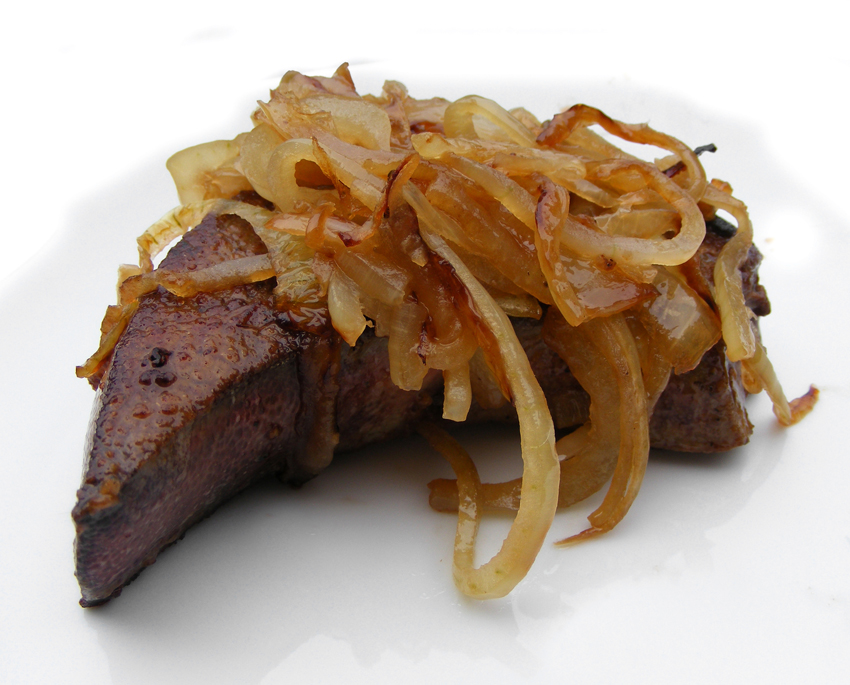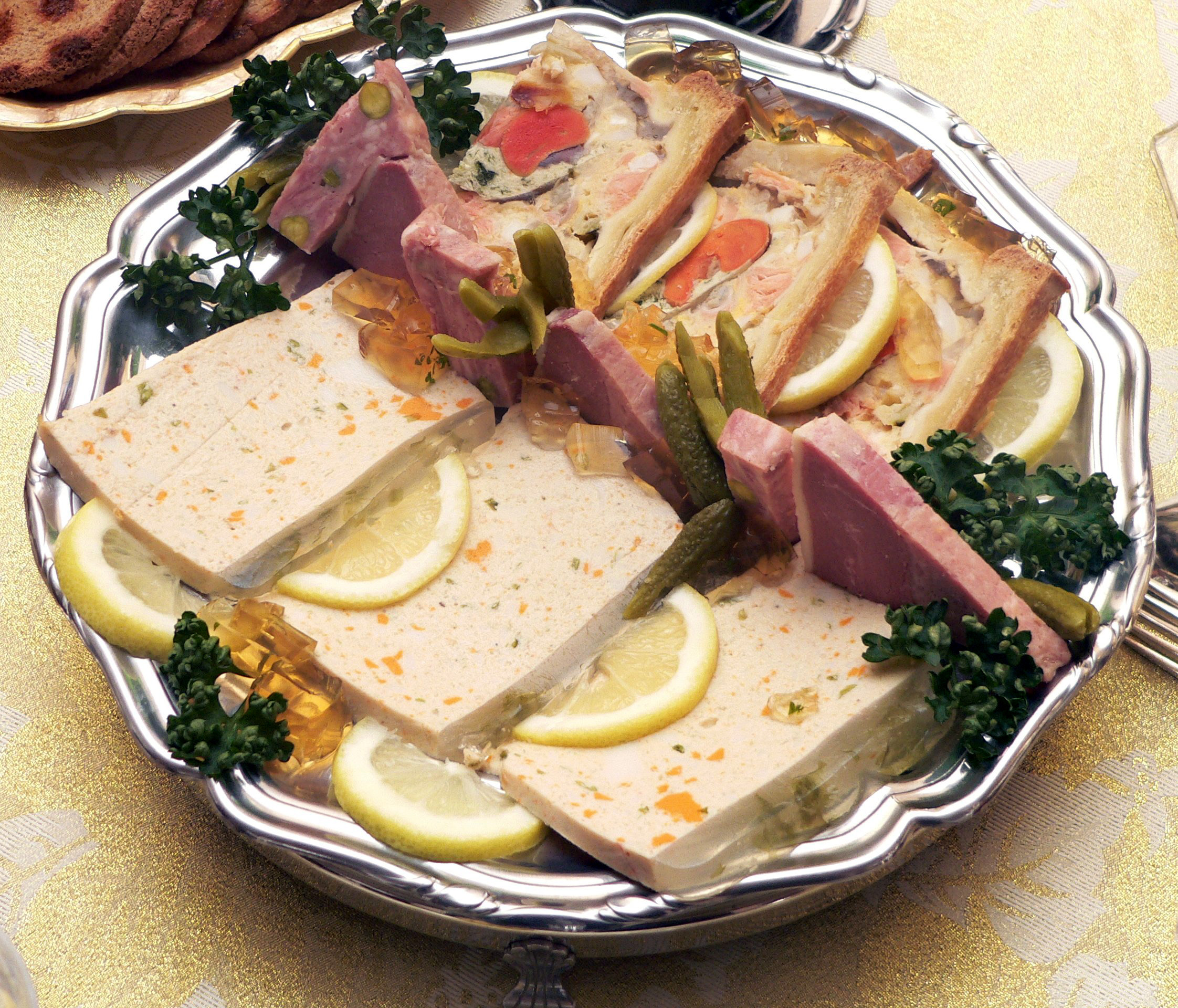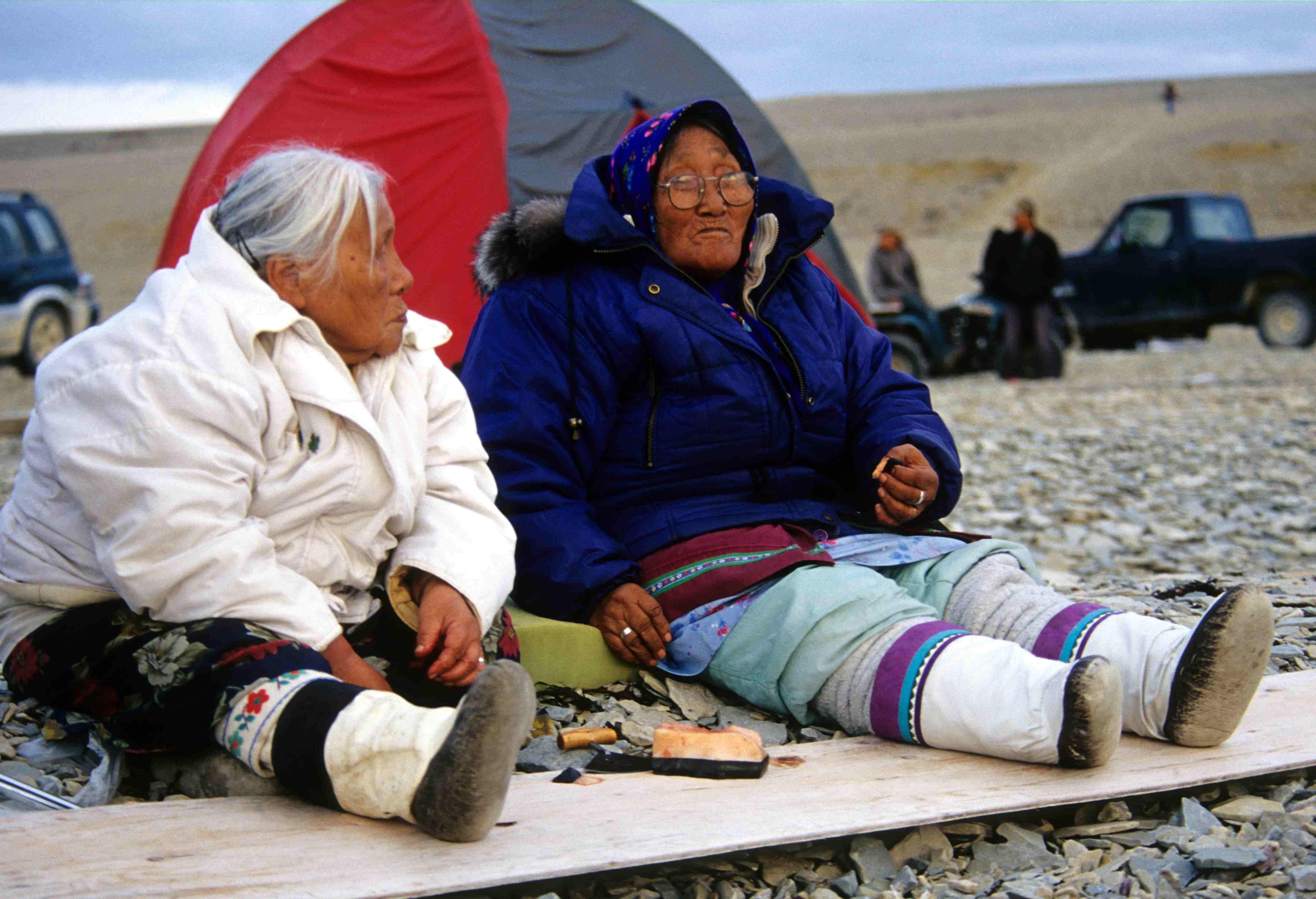|
Arctic Hysteria
Piblokto, also known as pibloktoq and Arctic hysteria, is a condition most commonly appearing in Inughuit (Northwest Greenlandic Inuit) societies living within the Arctic Circle. Piblokto is a culture-specific hysterical reaction in Inuit, especially women, who may perform irrational or dangerous acts, followed by amnesia for the event. Piblokto may be linked to repression of the personality of Inuit women. The condition appears most commonly in winter. It is considered to be a form of a culture-bound syndrome, although more recent studies (see ''Skepticism'' section) question whether it exists at all. Piblokto is also part of the glossary of cultural bound syndromes found in the Diagnostic and Statistical Manual of Mental Disorders (DSM-IV). History Piblokto was first documented in 1892 and reports by European explorers describe the phenomenon as common to all Arctic regions. Explorers were the first to record piblokto in writing. Among these, Admiral Robert Peary provided a ... [...More Info...] [...Related Items...] OR: [Wikipedia] [Google] [Baidu] |
Hysteria
Hysteria is a term used colloquially to mean ungovernable emotional excess and can refer to a temporary state of mind or emotion. In the nineteenth century, hysteria was considered a diagnosable physical illness in women. It is assumed that the basis for diagnosis operated under the belief that women are predisposed to mental and behavioral conditions; an interpretation of sex-related differences in stress responses. In the twentieth century, it shifted to being considered a mental illness. Many influential people such as Sigmund Freud and Jean-Martin Charcot dedicated research to hysteria patients. Currently, most doctors practicing medicine do not accept hysteria as a medical diagnosis. The blanket diagnosis of hysteria has been fragmented into myriad medical categories such as epilepsy, histrionic personality disorder, conversion disorders, dissociative disorders, or other medical conditions. Furthermore, lifestyle choices, such as choosing not to wed, are no longer consid ... [...More Info...] [...Related Items...] OR: [Wikipedia] [Google] [Baidu] |
Polar Regions Of Earth
The polar regions, also called the frigid geographical zone, zones or polar zones, of Earth are the regions of the planet that surround its geographical poles (the North Pole, North and South Poles), lying within the polar circles. These high latitudes are dominated by floating Arctic ice pack, sea ice covering much of the Arctic Ocean in the north, and by the Antarctic ice sheet on the continent of Antarctica and the Southern Ocean in the south. Definitions The Arctic has various definitions, including the region north of the Arctic Circle (currently Epoch 2010 at 66°33'44" N), or just the region north of 60th parallel north, 60° north latitude, or the region from the North Pole north to the Tree line, timberline. The Antarctic is usually defined simply as south of 60th parallel south, 60° south latitude, or the continent of Antarctica. The 1959 Antarctic Treaty System, Antarctic Treaty uses the former definition. The two polar regions are distinguished from the other two c ... [...More Info...] [...Related Items...] OR: [Wikipedia] [Google] [Baidu] |
Angakkuq
The Inuit angakkuq (plural: ''angakkuit'', Inuktitut syllabics ᐊᖓᑦᑯᖅ or ᐊᖓᒃᑯᖅ; Inuvialuktun: '; kl, angakkoq, pl. ''angakkut'') is an intellectual and spiritual figure in Inuit culture who corresponds to a medicine man. Other cultures, including Alaska Natives, have traditionally had similar spiritual mediators, although the Alaska Native religion has many forms and variants. Role in Inuit society Both women, such as Uvavnuk, and men could become an angakkuq, although it was rarer for women to do so. The process for becoming an angakkuq varied widely. The son of a current angakkuq might be trained by his father to become one as well. A shaman might make a prophecy that a particular infant would become a prophet in adulthood. Alternatively, a young man or woman who exhibited a predilection or power that made them stand out might be trained by an experienced mentor. There are also instances of angakkuit claiming to have been called to the role through dreams o ... [...More Info...] [...Related Items...] OR: [Wikipedia] [Google] [Baidu] |
Inuit Religion
Inuit religion is the shared spiritual beliefs and practices of the Inuit, an Indigenous peoples of the Americas, indigenous people from Alaska, northern Canada, parts of Siberia and Greenland. Their religion shares many similarities with some Alaska Native religions. Traditional Inuit religious practices include animism and shamanism, in which spiritual healers mediate with spirits. Today many Inuit follow Christianity, but traditional Inuit spirituality continues as part of a living, oral tradition and part of contemporary Inuit society. Inuit who balance indigenous and Christian theology practice religious syncretism. Inuit cosmology provides a narrative about the world and the place of people within it. Rachel Qitsualik-Tinsley writes: Traditional stories, rituals, and taboos of the Inuit are often precautions against dangers posed by their harsh Arctic environment. Knud Rasmussen asked his guide and friend Aua (angakkuq), Aua, an ''angakkuq'' (spiritual healer), about Inuit ... [...More Info...] [...Related Items...] OR: [Wikipedia] [Google] [Baidu] |
Animism
Animism (from Latin: ' meaning 'breath, Soul, spirit, life') is the belief that objects, places, and creatures all possess a distinct Spirituality, spiritual essence. Potentially, animism perceives all things—Animal, animals, Plant, plants, Rock (geology), rocks, River, rivers, Weather, weather systems, human handiwork, and perhaps even Word, words—as animated and alive. Animism is used in the anthropology of religion, as a term for the Belief, belief system of many Indigenous peoples, especially in contrast to the relatively more recent development of organized religions. Animism focuses on the Metaphysics, metaphysical universe, with a specific focus on the concept of the immaterial soul. Although each culture has its own mythologies and rituals, animism is said to describe the most common, foundational thread of indigenous peoples' "spiritual" or "supernatural" perspectives. The animistic perspective is so widely held and inherent to most indigenous peoples, that they ofte ... [...More Info...] [...Related Items...] OR: [Wikipedia] [Google] [Baidu] |
Shamanism
Shamanism is a religious practice that involves a practitioner (shaman) interacting with what they believe to be a Spirit world (Spiritualism), spirit world through Altered state of consciousness, altered states of consciousness, such as trance. The goal of this is usually to direct Non-physical entity, spirits or Energy (esotericism), spiritual energies into the physical world for the purpose of healing, divination, or to aid human beings in some other way. Beliefs and practices categorized as "shamanic" have attracted the interest of scholars from a variety of disciplines, including anthropologists, archeologists, historians, religious studies scholars, philosophers and psychologists. Hundreds of books and Academic publishing#Scholarly paper, academic papers on the subject have been produced, with a peer-reviewed academic journal being devoted to the study of shamanism. In the 20th century, non-Indigenous Peoples, Indigenous Westerners involved in countercultural movements, ... [...More Info...] [...Related Items...] OR: [Wikipedia] [Google] [Baidu] |
Bearded Seal
The bearded seal (''Erignathus barbatus''), also called the square flipper seal, is a medium-sized pinniped that is found in and near to the Arctic Ocean. It gets its generic name from two Greek words (''eri'' and ''gnathos'') that refer to its heavy jaw. The other part of its Linnaean name means bearded and refers to its most characteristic feature, the conspicuous and very abundant whiskers. When dry, these whiskers curl very elegantly, giving the bearded seal a "raffish" look. Bearded seals are the largest northern phocid. They have been found to weigh as much as with the females being the largest. However, male and female bearded seals are not very dimorphic. The only member of the genus ''Erignathus'', the bearded seal is unique in that it is an intermediate. Bearded seals belong to the family Phocidae which contains two subfamilies: Phocinae and Monachinae. The bearded seal possesses characteristics of both of these subfamilies. Fossils first described in 2002 indicate ... [...More Info...] [...Related Items...] OR: [Wikipedia] [Google] [Baidu] |
Polar Bear
The polar bear (''Ursus maritimus'') is a hypercarnivorous bear whose native range lies largely within the Arctic Circle, encompassing the Arctic Ocean, its surrounding seas and surrounding land masses. It is the largest extant bear species, as well as the largest extant land carnivore. A boar (adult male) weighs around , while a sow (adult female) is about half that size. Although it is the sister species of the brown bear, it has evolved to occupy a narrower ecological niche, with many body characteristics adapted for cold temperatures, for moving across snow, ice and open water, and for hunting seals, which make up most of its diet. Although most polar bears are born on land, they spend most of their time on the sea ice. Their scientific name means "maritime bear" and derives from this fact. Polar bears hunt their preferred food of seals from the edge of sea ice, often living off fat reserves when no sea ice is present. Because of their dependence on the sea ice, polar be ... [...More Info...] [...Related Items...] OR: [Wikipedia] [Google] [Baidu] |
Liver (food)
The liver of mammals, fowl, and fish is commonly eaten as food by humans (see offal). Pork, lamb, veal, beef, chicken, goose, and cod livers are widely available from butchers and supermarkets while stingray and burbot livers are common in some European countries. Animal livers are rich in iron, copper, the B vitamins and preformed vitamin A. Daily consumption of liver can be harmful; for instance, vitamin A toxicity has been proven to cause medical issues to babies born of pregnant mothers who consumed too much vitamin A. A single serving of beef liver exceeds the tolerable upper intake level of vitamin A. 100 g cod liver contains 5 mg of vitamin A and 100 µg of vitamin D. Liver contains large amounts of vitamin B12, and this was one of the factors that led to the discovery of the vitamin. Etymology From Middle English liver, from Old English , from Proto-Germanic , from Proto-Indo-European "to smear, smudge, stick", from Proto-Indo-European - "to be sl ... [...More Info...] [...Related Items...] OR: [Wikipedia] [Google] [Baidu] |
Offal
Offal (), also called variety meats, pluck or organ meats, is the organs of a butchered animal. The word does not refer to a particular list of edible organs, which varies by culture and region, but usually excludes muscle. Offal may also refer to the by-products of milled grains, such as corn or wheat. Some cultures strongly consider offal as food to be taboo, while others use it as everyday food or even as delicacies. Certain offal dishes—including '' foie gras'', '' pâté'', and haggis —are internationally regarded as gourmet food in the culinary arts. Others remain part of traditional regional cuisine and may be consumed especially during holidays. This includes sweetbread, Jewish chopped liver, U.S. chitterlings, Mexican menudo, as well as many other dishes. On the other hand, intestines are traditionally used as casing for sausages. Depending on the context, ''offal'' may refer only to those parts of an animal carcass discarded after butchering or skinning ... [...More Info...] [...Related Items...] OR: [Wikipedia] [Google] [Baidu] |
Eskimo
Eskimo () is an exonym used to refer to two closely related Indigenous peoples: the Inuit (including the Alaska Native Iñupiat, the Greenlandic Inuit, and the Canadian Inuit) and the Yupik peoples, Yupik (or Siberian Yupik, Yuit) of eastern Siberia and Alaska. A related third group, the Aleut, which inhabit the Aleutian Islands, are generally excluded from the definition of Eskimo. The three groups share a relatively recent common ancestor, and speak related languages belonging to the Eskaleut languages, Eskaleut language family. These circumpolar peoples have traditionally inhabited the Arctic and subarctic regions from eastern Siberia (Russia) to Alaska (United States), Northern Canada, Nunavik, Nunatsiavut, and Greenland. Many Inuit, Yupik, Aleut, and other individuals consider the term ''Eskimo'', which is of a disputed etymology, to be unacceptable and even pejorative. Eskimo continues to be used within a historical, linguistic, archaeological, and cultural context. The g ... [...More Info...] [...Related Items...] OR: [Wikipedia] [Google] [Baidu] |
Inuit Cuisine
Historically Inuit cuisine, which is taken here to include Greenlandic cuisine, Yup'ik cuisine and Aleut cuisine, consisted of a diet of animal source foods that were fished, hunted, and gathered locally. In the 20th century the Inuit diet began to change and by the 21st century the diet was closer to a Western diet. After hunting, they often honour the animals' spirit by singing songs and performing rituals. Although traditional or country foods still play an important role in the identity of Inuit, much food is purchased from the store, which has led to health problems and food insecurity. According to Edmund Searles in his article "Food and the Making of Modern Inuit Identities", they consume this type of diet because a mostly meat diet is "effective in keeping the body warm, making the body strong, keeping the body fit, and even making that body healthy". Food sources * Hunted meats: ** Sea mammals such as walrus, seal, and whale. Whale meat generally comes from the narwhal, ... [...More Info...] [...Related Items...] OR: [Wikipedia] [Google] [Baidu] |










